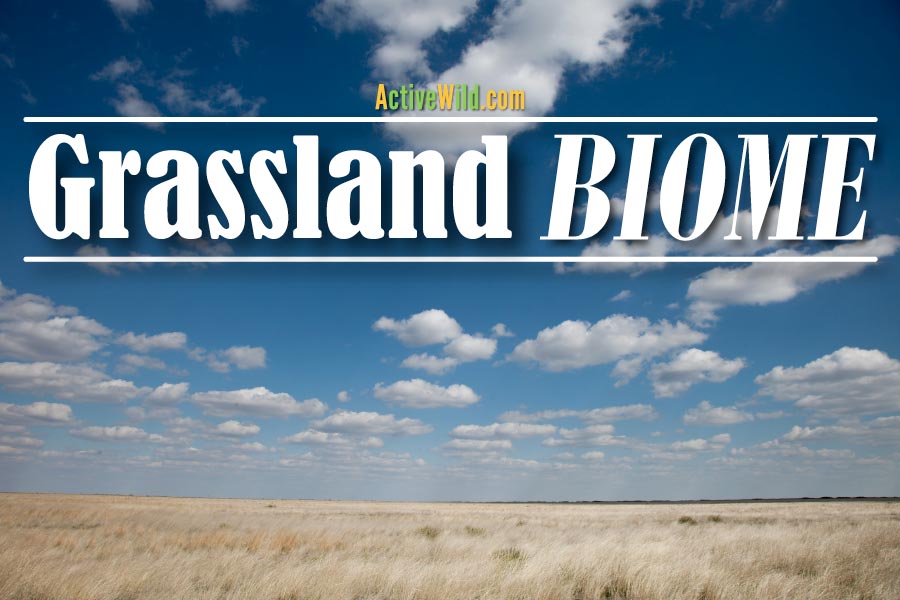The Grassland Biome
The animals and plants that make up the grassland biome are what define a grassland biome. The dominant plants in grasslands are grasses, which are found all over the globe. Grasslands cover between 30 and 40% of Earth’s land area, with the exception of Antarctica. They can be found on every continent. Grasslands are large open areas with few trees and little rainfall, which are typical of sparsely vegetated areas. Grazing animals are often seen in these areas, and their presence helps to limit tree growth.

Grasslands and the Grassland Biome: Page Index
- What Is A Grassland?
- Grasslands Vs Savannahs
- Grasslands Climate
- Fire in Grasslands
- Grassland Plants
- Characteristics of grasses
- Grassland Animals
- Development Of The Grasslands Biome
- Further Reading
What Is A Grassland?
Grasslands include grassy areas as well as grass-like plants like sedges and rushes, which dominate plant growth. Since there are so few trees in grasslands, the land is large and open, with little plant cover. Grazing animals, which can tolerate low rainfall but not bigger plants; and a relatively high frequency of wild fires, which grasses are more able to recover from than other plants, are all contributing factors that contribute to the dominance of grasses in these areas.
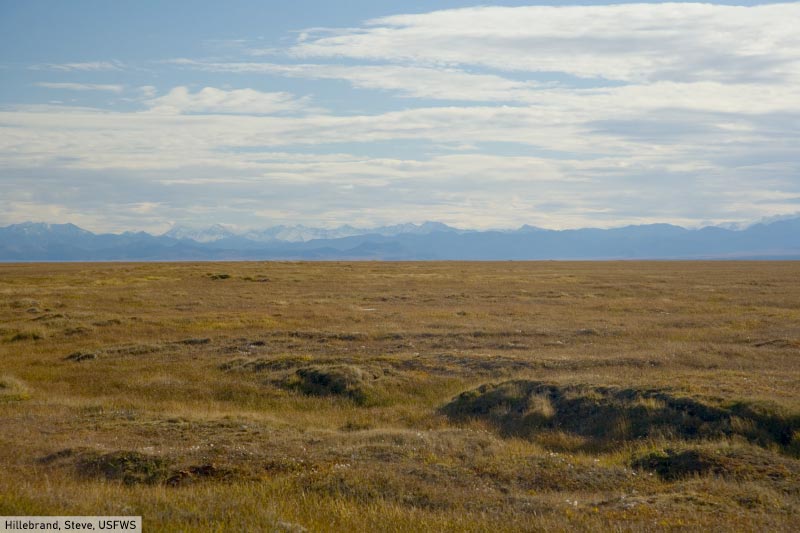
Temperate Grasslands
The grasslands biome, which includes subregions, is also known as temperate grasslands since it typically occurs in mid-latitude or temperate areas. Grasslands are known by their regional names in different places:
- Eurasia – steppe
- North America – prairie
- South America – pampas
- South Africa – veld
Mid-altitude or montane areas are frequently home to grasslands. Mountain slopes and plateaus are two places where they may grow.
Grassland Soil
Grassland soil is rich and productive, with a well-developed soil web. As a result, it is highly suited for commercial agriculture.
Grasslands Vs Savannas
Grasses, unlike savannas, totally dominate grasslands in terms of species. Grass species may account for up to 80% of the habitat (with woody plants such as trees and shrubs accounting for the rest).
Both grazing and browsing animals can live in savannas, however grazers are the most common mammalian species in grasslands.
Savannas, which bridge forests and scrublands or deserts, are found only in the sub-tropics.
On average, grasslands receive less annual rainfall than savannas and have a greater range of temperatures both seasonally and daily.
Grasslands Climate
Most rain occurs in the form of convectional rain in Grasslands during the spring and early summer.
Convectional rain is caused when moisture evaporates from the plains, rises to form clouds, cools and falls back down to earth as rain.
Grasslands in higher altitudes experience relief rain.
Relief rain occurs when warm air is forced to rise as it meets hills and mountains, causing the moisture contained within to cool and condense.
Thunderstorms are frequent in grasslands, and occasionally result in hail.
Mist may form in the early mornings but is usually burned up soon after sunrise.
Grasslands go through extended periods of drought during the autumn and winter. Snowfall helps to boost the water table in hilly areas.
Grasslands receive a range of yearly precipitation. If many years pass with below-average rainfall, droughts can occur.
Grasslands Temperature
temperature changes are enormous in grasslands, both annually and diurnally.
Summers are hot, with highs reaching over 100 degrees Fahrenheit during the winter months.
Nighttime temperatures are frequently much lower than the freezing point in the winter, while day temperatures range from near-summer levels.
The large temperature change is primarily due to a lack of cloud cover in the winter. The nights are chilly, and the days are lengthy, which helps to exacerbate dryness and evaporative phenomena.
Fire in Grasslands
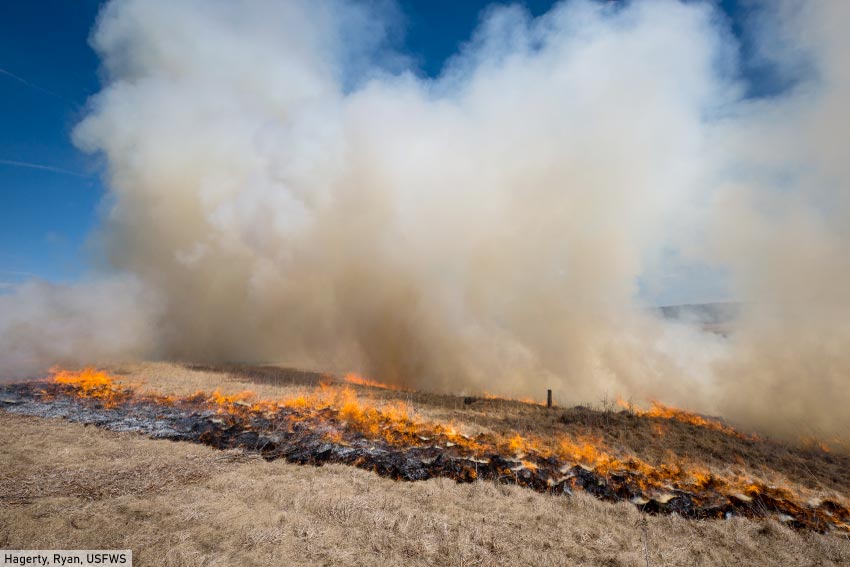
The Grassland biome is shaped by fire, which is a significant factor. Wildfires may be started by lightning in the summer, however when the grass is dried and burns readily, the true damage occurs in winter.
Woody plants don’t bounce back from severe flames very easily, if at all. Opportunistic grasses quickly take up the vacancy left by trees being burnt.
Grassland Plants
Grasses
The grass family, Poaceae, includes flowering plants. There are around 10,000 to 12,000 different grass species. They cover more area than any other plant species, covering roughly 30% of the planet’s surface.
Grasses have spread to every continent save Antarctica thanks to their diversity and tenacity. Except for the icecaps, they may be found in every biome.
The grassland biome includes grass-like plants from other families, such as rushes and sedges.
Characteristics of grasses
Grasses are slender blade leaves that do not belong to the woody family. Water loss due to evaporation is reduced in this form.
Grass stems are hollow, cylindrical, and supple, allowing them to withstand strong winds and tolerate exposure.
Grass flowers develop as tiny, insignificant clusters on sprigs. They are reliant on the wind rather than attracting pollinators.
The seeds of flowers are spread by wind, birds and grazing animals.
Insects carry the seeds, which are otherwise known as grain, underground, where they are safe from frost and fire.
Lateral roots, which form at rhizomes, are what grasses spread via.
Grasses have a deep subterranean root system that allows them to thrive in a variety of soil types. Grasses may be found in deserts, woodland floors, marshes, and open plains as a consequence of this.
After long droughts, severe cold spells, and fires, the root system helps grasses to recover.
Woody plants – trees and shrubs
The Grassland biome is mostly devoid of Woody plants with multiyear development, such as trees and shrubs.
The extremely harsh climatic and environmental conditions of grasslands, which include drought, frost, large temperature shifts, and fire, make it difficult for plants like these to reach maturity.
Wild flowers

Wild flowers flourish in grasslands, giving areas in the grassland biome the appearance of meadows at various times of year.
After the initial rains, flowers bloom in vast numbers in grasslands for a brief time. ‘Super blooms’ occur during years of big rainfall, with even more abundant flower displays.
Large numbers of pollinating insects are drawn to vast expanses of brilliantly colored blossoms. In exchange for reproductive services, the flowering plants have a mutually beneficial, symbiotic relationship with the insect life.
Grasland flowers, much like grasses, depend on the wind, birds, grazing animals, and insects to disperse their seeds.
Grassland Animals

Grasslands support a diversity of animal life, despite lacking the drama of the food chain found in savanna habitats.
Grassland Mammals
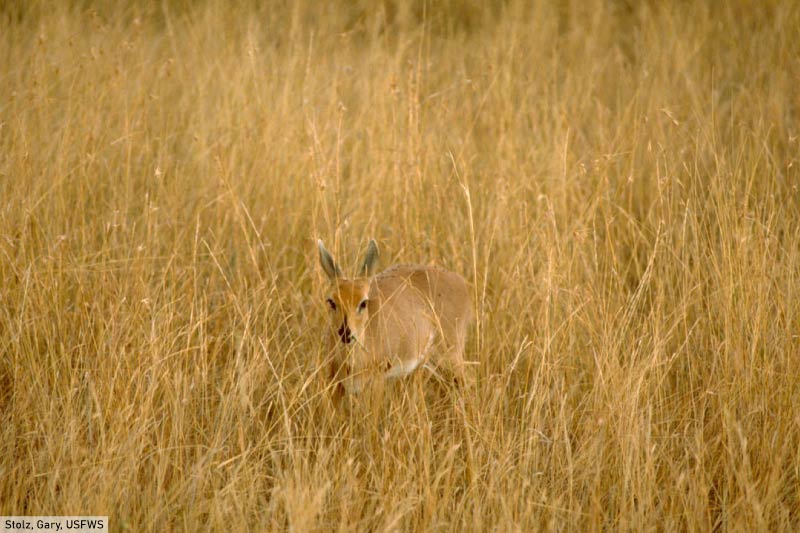
Herds of grazing animals were formerly abundant in grasslands. Bison herds in North America’s plains numbered billions of creatures, and springbok populations in South Africa’s veld numbered tens of millions.
Only a few purebred bison survive after the bison have bred with domestic cattle.
Grasslands are home to grazing zebras, wild horses, and a variety of antelope species.
The huge cats of the Savannas would have trouble hiding in the vast open regions, thus grassland predators are smaller than them. Wolves, coyotes, jackals, and foxes are among the animals that use bursts of speed to pursue their prey.
Underground Animals
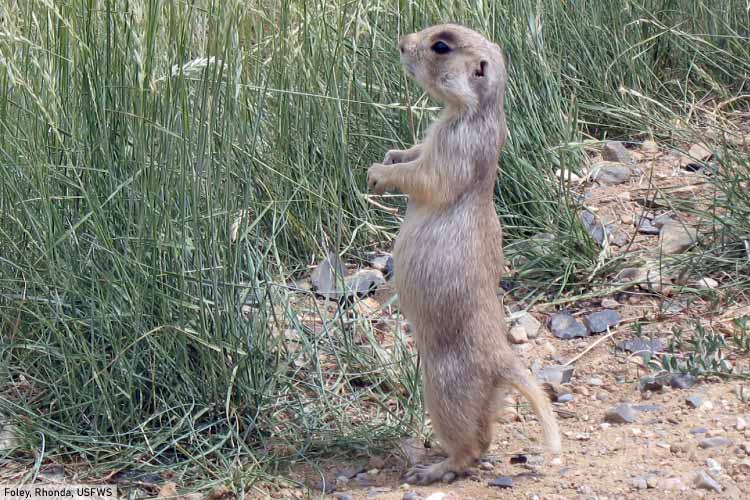
Insects, arachnids, reptiles, and mammals are among the many grassland creatures that live underground in tunnels, burrows, and mounds to escape the harsh surface conditions.
Ants and beetles, for example, dig down to get their meals and keep it in a secret place where they may also feed their youngsters.
Burrow networks are used by rats such as prairie dogs for resting, protection from harsh weather, and protection from predators.
Hares, meerkats, mongooses, and jackals are among the other small grassland species that live underground and raise families.
Grassland Birds

The lesser prairie chicken, a grassland bird found in North America.
Grassland birds range in size from tiny enough to perch on a grass stem to massive raptors and ground species like wild turkeys and bustards.
Most grassland birds rest and nest on the ground, where they are vulnerable to predators, due to a lack of trees. Many animals use camouflage to protect their eggs and young.
Eagles, hawks, buzzards, and owls are among the grassland birds of prey that breed in rock niches and scan their environment for prey from elevated altitudes or trees.
Thermals are used by larger raptors and carrion eaters like vultures to search for food. Because it takes time for the ground to warm and provide the thermals on which they soar in the winter, their hunting hours are reduced.
Seasonal Wetlands
Rain saturates hollows and low places in the spring and summer, creating temporary wetlands.
Frogs and toads breed in these seasonal wetlands, which provide water for their eggs. Wading birds eat both their eggs and hatched tadpoles.
The young are raised and fed throughout the season by the waders. Herons, ducks, and geese are among the birds that live locally. Some species are migratory, such as storks.
The impact of development on the Grasslands biome.
Natural, semi-natural, and improved grasslands are the three categories of grasslands.
Only livestock grazing has been allowed in natural areas.
Large areas of land that are not owned by commercial farmers are known as commonage in South Africa, and pastural farmers share them.
When the land’s carrying capacity is surpassed, overgrazing occurs. When animals use the same paths over and over, erosion occurs.
For example, browsing cattle Goats, which tend to uproot natural grass roots, harm the grasslands.
Live stock grazing and haymaking are performed in semi-natural grasslands, which are managed areas.
While the latter is time-consuming, it ensures that the animals have winter feed and that grass does not get burned by flames.
The introduction of commercially viable non-native grasses has allowed for better lands to be farmed. By plowing or tillage, the soil is disturbed.
Planting the same crop for many years in a row inevitably decreases the diversity of the land, resulting in monocultures. Artificial fertilisers and supplements are used to compensate for soil degradation.
The diversity of grasses and natural insects is further reduced by pesticides such as herbicides and insecticides, which kill off competing kinds of grasses and insects. As a result, it has a negative impact on the rest of the ecosystem.
